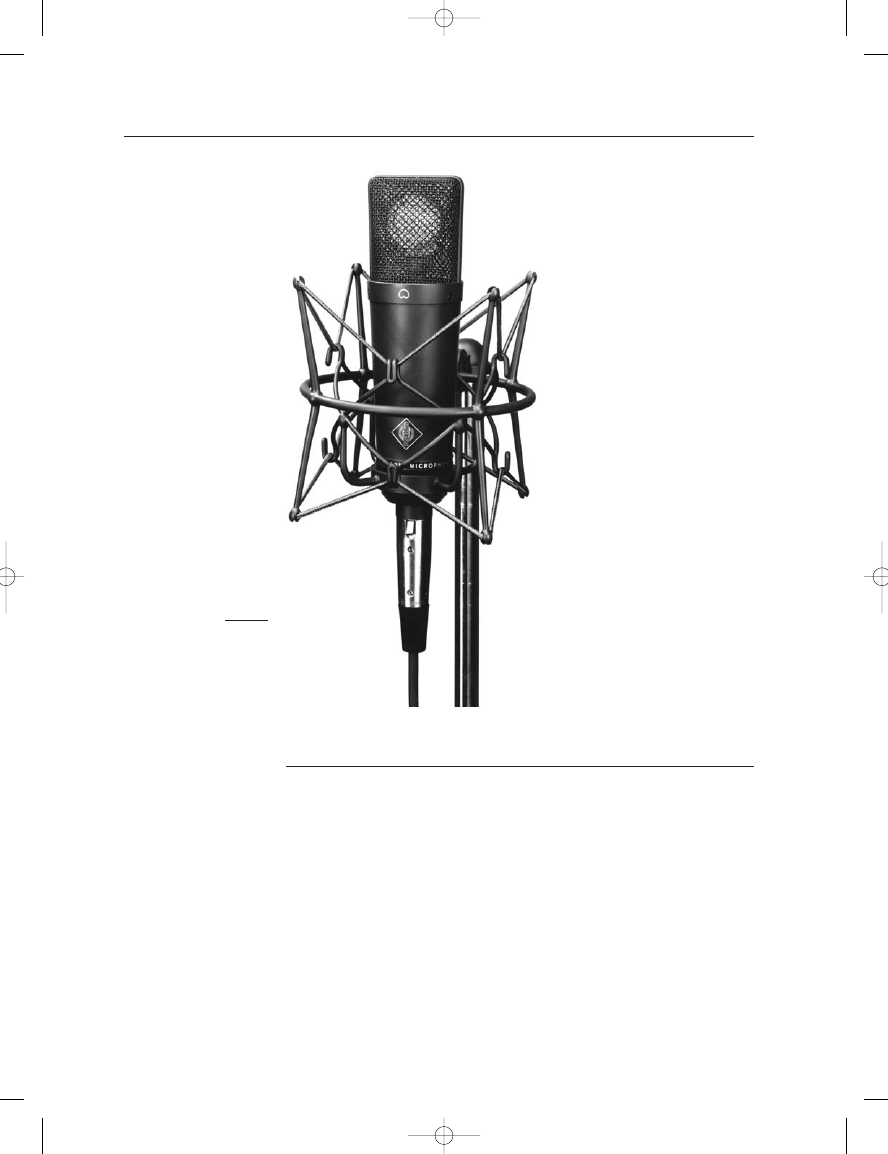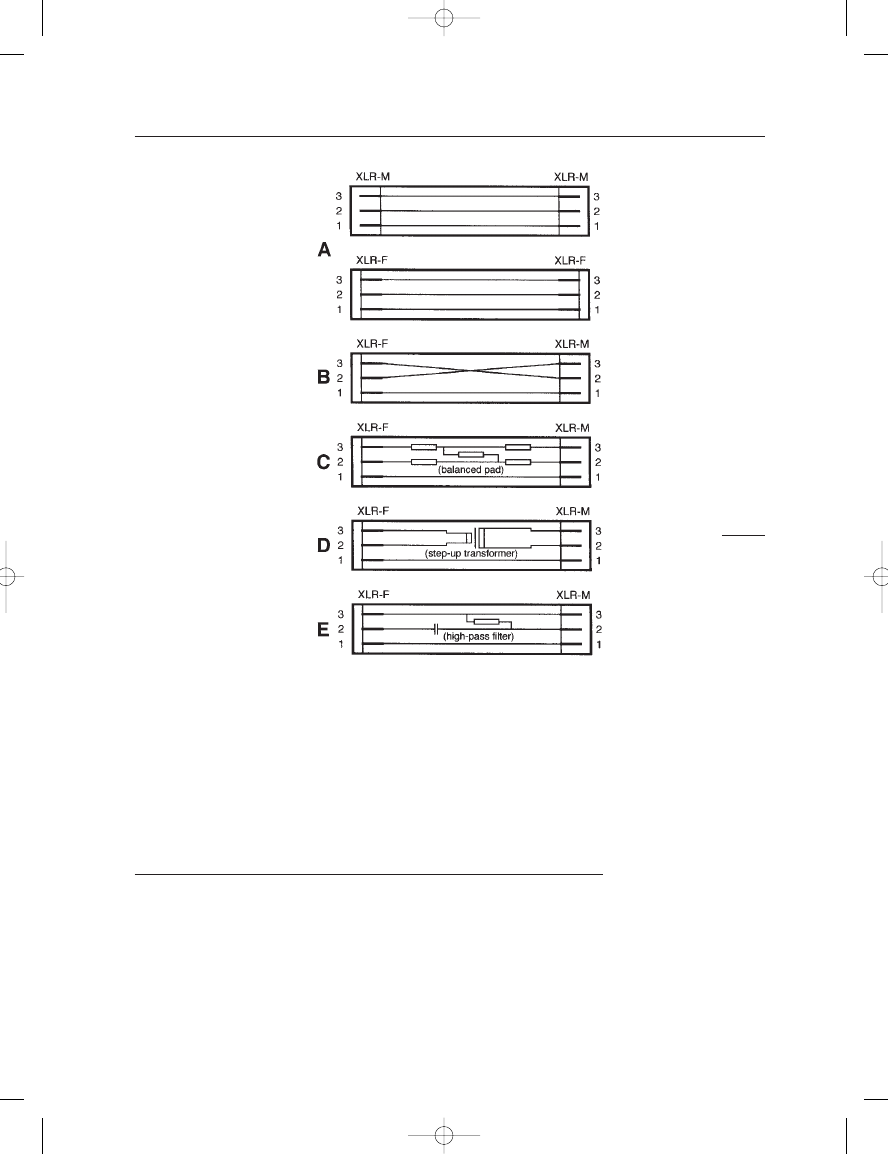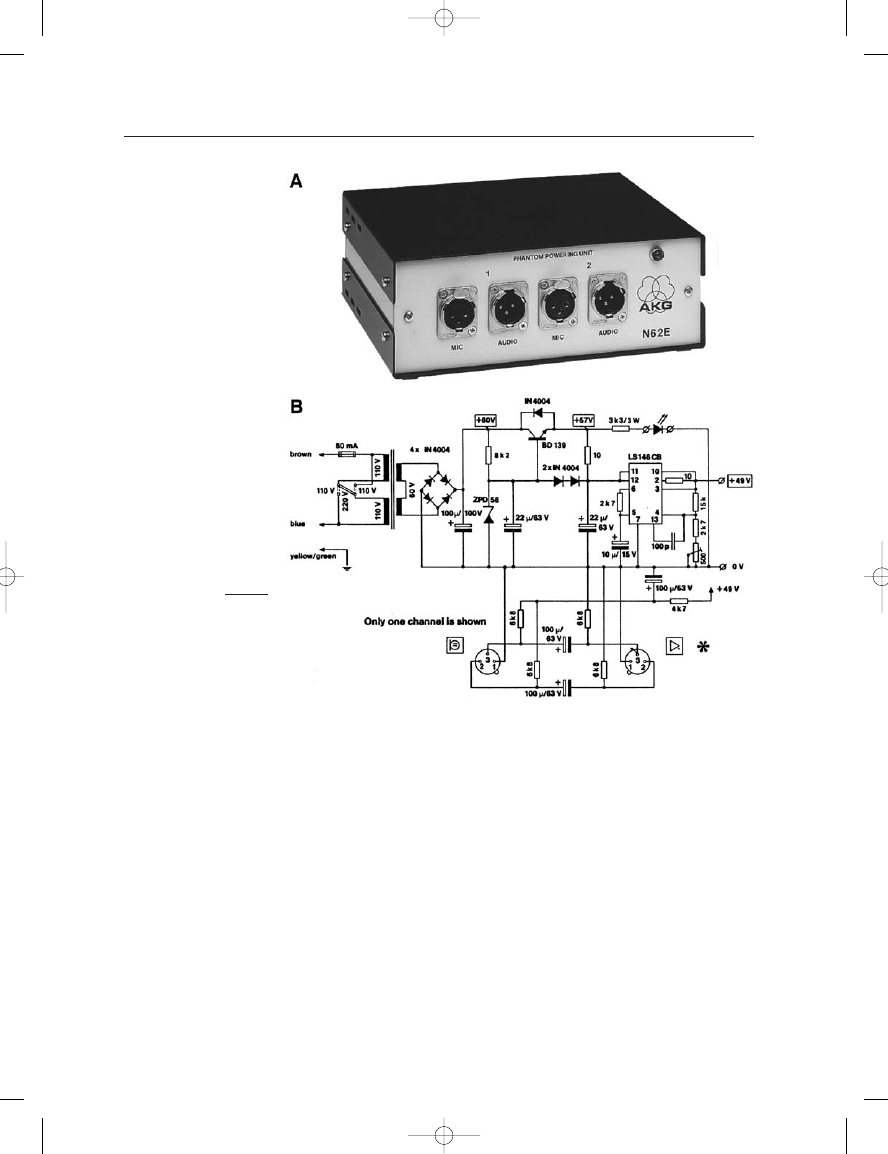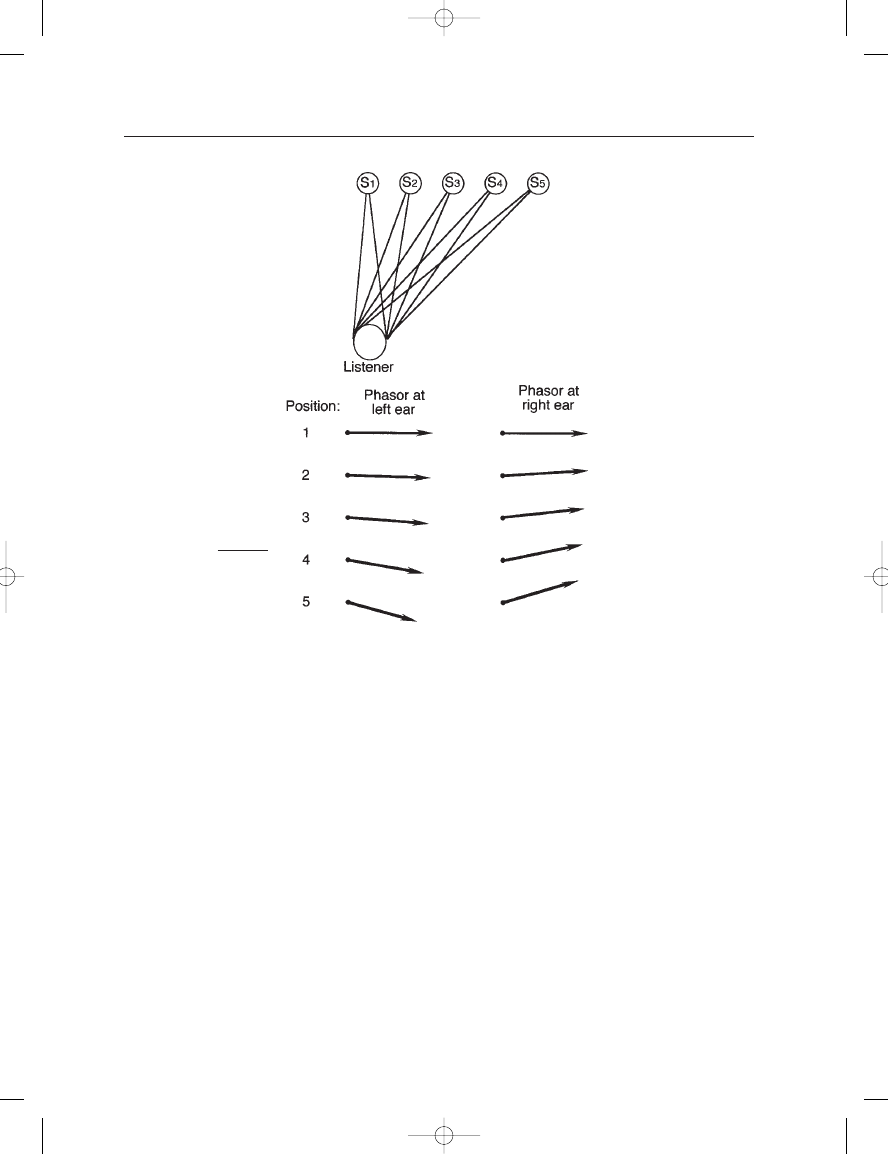ВУЗ: Казахская Национальная Академия Искусств им. Т. Жургенова
Категория: Книга
Дисциплина: Не указана
Добавлен: 03.02.2019
Просмотров: 17298
Скачиваний: 51

10: Microphone Accessories
163
IN-LINE ELECTRICAL ACCESSORIES
Figure 10–13 shows a number of in-line passive devices that can be
used in microphone circuits. The assemblies shown at A are known as
“turnarounds” and may be used when, for whatever reasons of
miswriting or design, XLR cables do not mate. The assemblies shown
at B are polarity or phase inverters and are used to correct polarity
mistakes in wiring. Some older line-level electronic items have inverted
outputs that may require correction. Polarity inverters may be used at
microphone level with phantom powering, but cannot be used with
T-powering.
An in-line balanced loss pad is shown in Figure 10–13C. Loss
values may be in the range of 20 dB or greater. The assembly may be
used with dynamic microphones, but not with any kind of remote
FIGURE 10–12
A typical large format
capacitor microphone and
its associated shock mount.
(Photo courtesy of
Neumann/USA.)
Earg_10.qxd 14/9/04 2:48 PM Page 163

powering for capacitor microphones. An in-line transformer, shown at
D, can be used to match a low impedance dynamic microphone with a
high impedance input in some nonprofessional applications. The in-line
LF-cut equalizer shown at E likewise may be used in nonprofessional
applications to correct for proximity effect in dynamic cardioid micro-
phones. The microphone splitter was discussed in Chapter 8, under
Microphone Splitters.
AUXILIARY MICROPHONE POWER SUPPLIES
Details of a phantom power supply are shown in Figure 10–14. This unit
enables a P-48 microphone to be used with a small PA-type mixer that
may not have built-in phantom powering.
THE MICROPHONE BOOK
164
FIGURE 10–13
Various electrical
accessories; male-female
“turnarounds” (A); polarity
inverter (B); loss pad (C);
low-to-high impedance
transformer (D); and
low-pass filter (E).
Earg_10.qxd 14/9/04 2:48 PM Page 164

10: Microphone Accessories
165
FIGURE 10–14
Photo (A) and circuit
diagram (B) for AKG
Acoustics N62E auxiliary
phantom power supply.
(Figure courtesy of AKG
Acoustics.)
Earg_10.qxd 14/9/04 2:48 PM Page 165

C
H
A
P
T
E
R
1
1
BASIC STEREOPHONIC
RECORDING TECHNIQUES
INTRODUCTION
Modern stereophonic recording, or stereo as we normally call it, makes
use of many diverse microphone arrays and techniques. At the basis of
them all are a set of fundamental two- or three-microphone arrays for
picking up a stereo sound stage for reproduction over a pair of loud-
speakers. In stereo reproduction the listener is able to perceive images on
the stereo sound stage which may span the entire angular width of the
loudspeaker array. The sound sources that are perceived between the
loudspeakers are known as “phantom images,” because they appear at
positions where there are no physical, or real sources of sound.
HOW STEREO WORKS: A SIMPLIFIED ANALYSIS
OF PHANTOM IMAGES
It is essential that the reader has an accurate, if only intuitive, knowledge
of how phantom images are formed. In Figure 11–1 we show how a set
of real sound sources located progressively from the center to the right-
front of the listener produce time-related signals (phasors) at the ears.
At frequencies below about 700 Hz, each single sound source (S
1
through S
5
) produces a signal at the right ear that leads the slightly
delayed signal at the left ear. The ears detect this as a phase difference at
low frequencies. At high frequencies (above about 2 kHz), the ears rely
primarily on the amplitude differences at the two ears, and a louder sig-
nal will appear at the right ear due to the shadowing effect of the head.
These two sets of cues reinforce each other, and the ear–brain combina-
tion interprets the differences at the ears as a set of apparent sources
spanning the front to front right.
For a sound source (S
1
) located directly in front of the listener, the low
frequency phasors will be equal at both ears, as will be the shadowing at
Earg_11.qxd 14/9/04 2:50 PM Page 166

11: Basic Stereophonic Recording Techniques
167
high frequencies. These cues reinforce the judgment that the sound source
is directly ahead of the listener.
With only two loudspeakers not exceeding a spread of about
60 degrees, we can create low frequency phasors for sound sources that
span the entire listening angle between the loudspeakers. To create the
phasors for a sound source directly ahead of the listener, all we need to
do is feed the same signal to both loudspeakers, as shown in Figure 11–2.
Here, each ear receives two signals, one slightly delayed with respect to
the other. Since the program content of the signals is the same, we can
combine their phasors at each ear to create new phasors, shown here as
L
T
and R
T
. Since these two phasors are equal (that is, they have the same
amplitude and phase relationships), the ear–brain combination will
interpret them as producing a sound source directly in front of the
listener – as long as the listener is facing forward.
By varying the amounts of left and right components, phasors can be
created that will simulate all positions between the left and right loud-
speakers. As we will soon see, a single pair of microphones can easily cre-
ate this effect across the left-to-right span of the playback loudspeaker
array.
FIGURE 11–1
Phasor analysis for real
sources with positions
ranging from center to
right-front of the listener.
Earg_11.qxd 14/9/04 2:50 PM Page 167